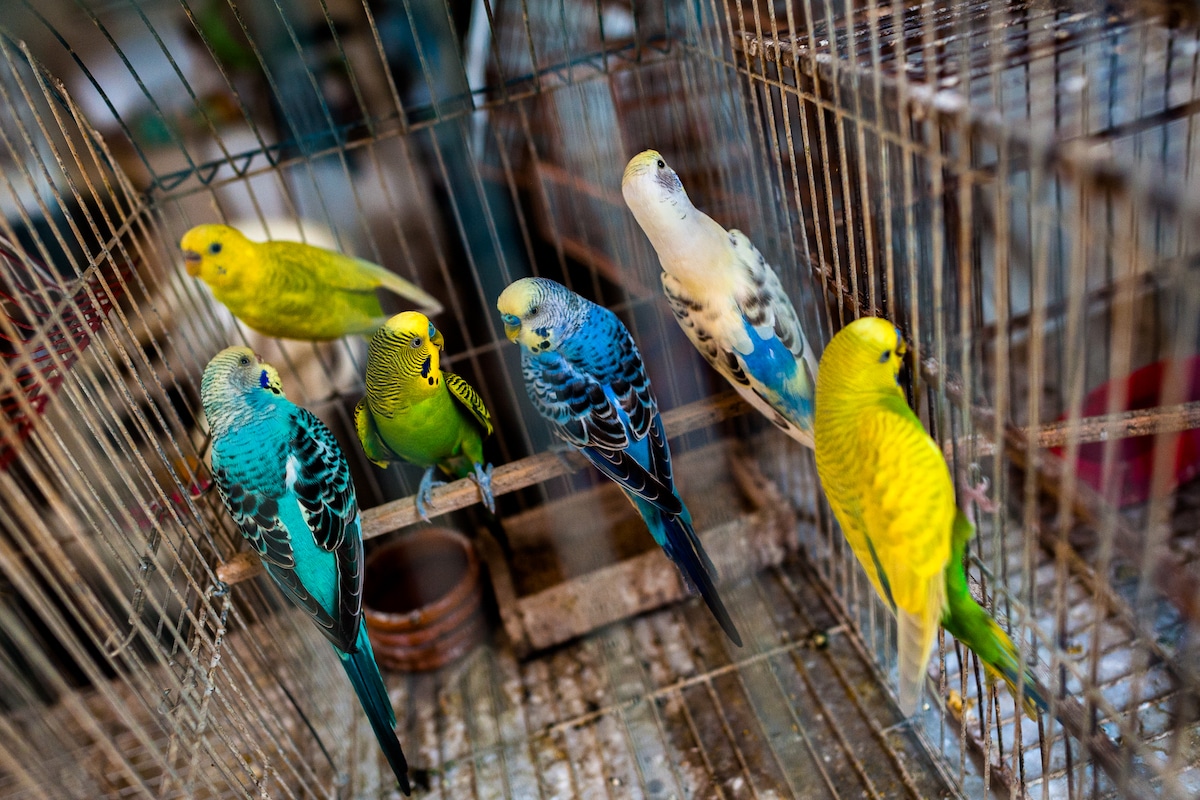Products You May Like
Songbirds in a cage at a bird market in Cartagena, Colombia. Jan Sochor / Getty Images
 Why you can trust us
Why you can trust us
Founded in 2005 as an Ohio-based environmental newspaper, EcoWatch is a digital platform dedicated to publishing quality, science-based content on environmental issues, causes, and solutions.
Sometimes, beauty can be a death sentence. During the nineteenth and early twentieth centuries, the demand for decorative feathers devastated the populations of birds like great egrets and birds of paradise. Today, it is the exotic pet trade that threatens bright birds with extinction.
A new study published in Current Biology September 15 found that tropical forests could become less colorful as some of their more uniquely hued species are caged for human enjoyment.
“For better or worse, aesthetic value is important to people,” lead study author Dr. Rebecca Senior of Durham University said in a press release announcing the results. “This can be a good thing, because it motivates people to care about and fund conservation efforts, but it can also be harmful when it motivates other people to want to trap and own those species.”
The new research looked specifically at the trade of passerines, or perching birds, more commonly referred to as songbirds. First, it added evidence for a long-standing hypothesis that birds are more colorful in the tropics, finding that 91 percent of the most color diversity was present in tropical passerines as well as 65 percent of the most unique colors.
Next, the research team considered whether colorful songbirds were more likely to be snapped up by the trade in exotic pets. Nearly 30 percent of all birds, or almost 3,000 species, are exploited by the international wildlife trade as either pets or for their feathers, eggs or bills. The research found that colorful songbirds were both more likely to be targeted by the trade and more likely to be considered threatened. What’s more, they determined which colors put a species more at risk.
“We found that species that had a more unique colour — something not similar to other birds — are more likely to be traded,” Senior told BBC News. “And there are particular categories of colour that tend to be more common in the trade — azure (sometimes described as sky blue) and yellow. Pure white is quite common, too.”
Understanding which colors made a bird more desirable for the pet trade allowed the researchers to predict what other species might be targeted if current popular species become too rare or go extinct. They found that between 95 to 478 species might be targeted in the future, and this would have a literally dimming effect on tropical ecosystems.
“By modeling future extinctions based on species’ current threat status, we predict localized losses of color diversity and uniqueness in many avian communities, undermining their aesthetic value and muting nature’s color palette,” the study authors wrote.
In particular, they predicted that color diversity for bird species would decline overall in tropical areas including Southeast Asia and the Brazilian Atlantic Forest. North Africa, Australia, and New Zealand would lose more diversity than expected based on the number of species targeted there. A similar phenomenon would happen for color uniqueness in Australia, New Zealand, areas within North America, the Andes and the Caribbean. Overall, the color palette of tropical birds could shift from blue to brown and orange.
The study authors recommended that conservationists keep an eye out on some of the species they predicted could be targeted in the future, since the trade tends to move faster than regulations can be passed. Senior also suggested to BBC News that it might make sense to breed especially desirable songbirds in captivity to leave wild birds free to brighten their ecosystems.
While this solution is controversial, in some places like Indonesia keeping songbirds is an important cultural tradition that might be hard for outsiders to eradicate.
“Rather than go in all guns blazing and say, ‘you can’t take these birds that have been an important part of your culture for so long,’ we could identify the species that are at risk and try to shift the sourcing to captive-bred birds,” Senior said. “There is definitely potential for that to fill the high demand that exists.”
Subscribe to get exclusive updates in our daily newsletter!
By signing up, you agree to the Terms of Use and Privacy Policy & to receive electronic communications from EcoWatch Media Group, which may include marketing promotions, advertisements and sponsored content.
